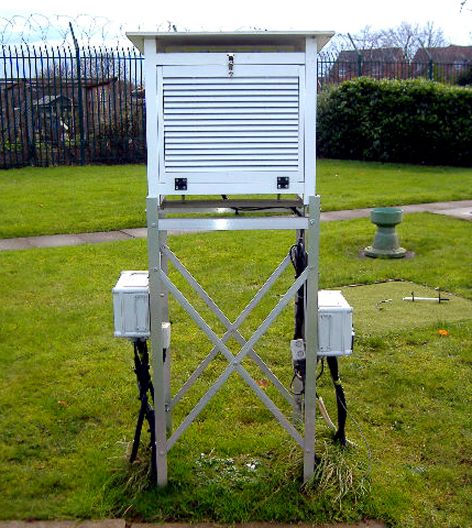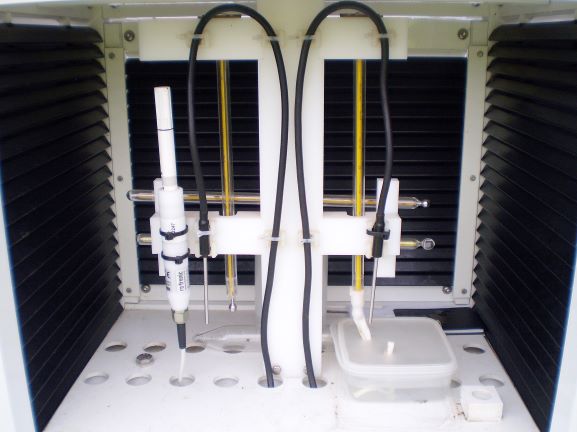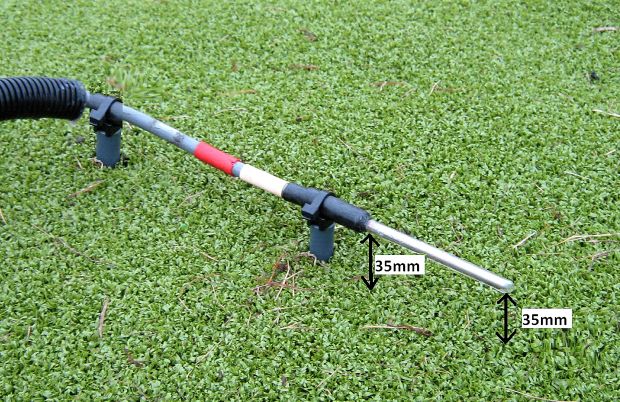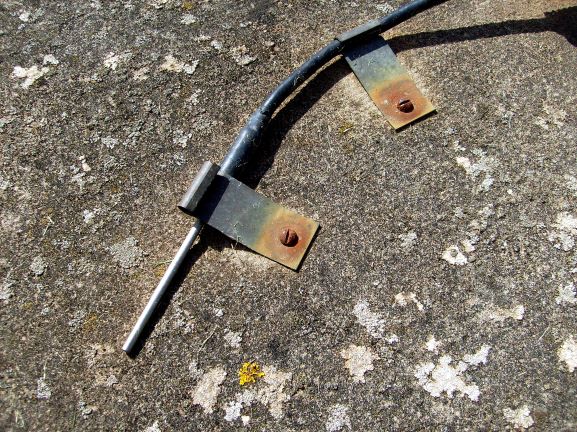How we measure temperature
Temperature is taken using specialist thermometers dependent upon the surface for which temperature is required.
How we measure air temperature
A platinum resistance thermometer (PRT) is used for the measurement of air temperature at all synoptic stations and all supplementary stations that employ an automatic system. The thermometer is exposed in a Stevenson screen (see image below) at a height of 1.25 m above the ground and aspirated only by natural ventilation through the side louvers.

Below you can see an image that shows the arrangement of thermometers in the screen. Two PRTs, one for operational use and one for backup, may be seen at the end of the looping black cables.
In addition, there are four liquid-in-glass thermometers in the screen that are used solely for check readings. Temperature measured by a PRT is related to the resistance of the instrument's platinum wire, measured by means of high precision electrical equipment usually located close to the screen.
The thermometer is calibrated every eight years providing traceability to the national temperature standard. The long period between calibrations is justified by the excellent stability demonstrated by PRT instruments.

How we measure ground minimum temperature
For many years the ground minimum temperature has been defined as the lowest overnight temperature measured by a thermometer, fully exposed to the open sky, suspended horizontally over an area covered with short cropped turf and in contact with the tips of grass blades.
With the advent of widespread automation and the lack of daily attention by an observer or caretaker, this set up has proved impractical. At most automatic stations the natural grass surface under the grass minimum thermometer has been replaced by an artificial equivalent.

A platinum resistance thermometer is used for the measurement of ground minimum temperature at almost all synoptic stations and all supplementary stations that employ an automatic system (see image above). Alcohol-in-glass minimum thermometers exposed over natural grass are used at manned climate stations.
The term ground frost used in forecasts signifies a grass minimum temperature below 0 °C.
How we measure concrete minimum temperature
Concrete minimum temperature is measured by a thermometer in contact with a concrete slab, as shown in the image below. The slab lies horizontally, fully exposed to the open sky and with its top almost flush with the surrounding ground. Platinum resistance thermometers are used at almost all stations with automatic systems, while alcohol-in-glass minimum thermometers are used at manned climate stations.
Concrete minimum measurements have been made at Met Office stations since 1 December 1968 and are mainly relevant to the incidence of ice on runways or roads.

How we measure soil minimum temperature
At many stations with automatic systems soil temperature is measured at a depth of 10 cm, 30 cm and 100 cm below the ground surface by platinum resistance thermometers.
Thermometers at 10 cm and 30 cm are buried by inserting the head at the required depth into the undisturbed soil on the vertical wall on the side of a trench which is then back-filled.
This method is impractical for the 100 cm measurement; instead the thermometer is suspended inside a tube with its tip at the appropriate depth. Problems can occasionally arise where the tube becomes flooded due to waterlogged soil or heavy rainfall. To ensure consistency of measurement from site to site, the ground surface above the 10 cm soil thermometer is maintained as bare soil.

At manned climate stations soil temperature is measured by alcohol-in-glass thermometers read by the observer.
Thermometers for the 10 cm measurement have a right angled bend in the tube so that the bulb may be buried in the soil at the required depth and the scale exposed horizontally above the surface for easy reading.
Normal alcohol-in-glass thermometers are suspended inside tubes for the 30 cm and 100 cm measurements. These thermometers are housed in an extra protective glass





